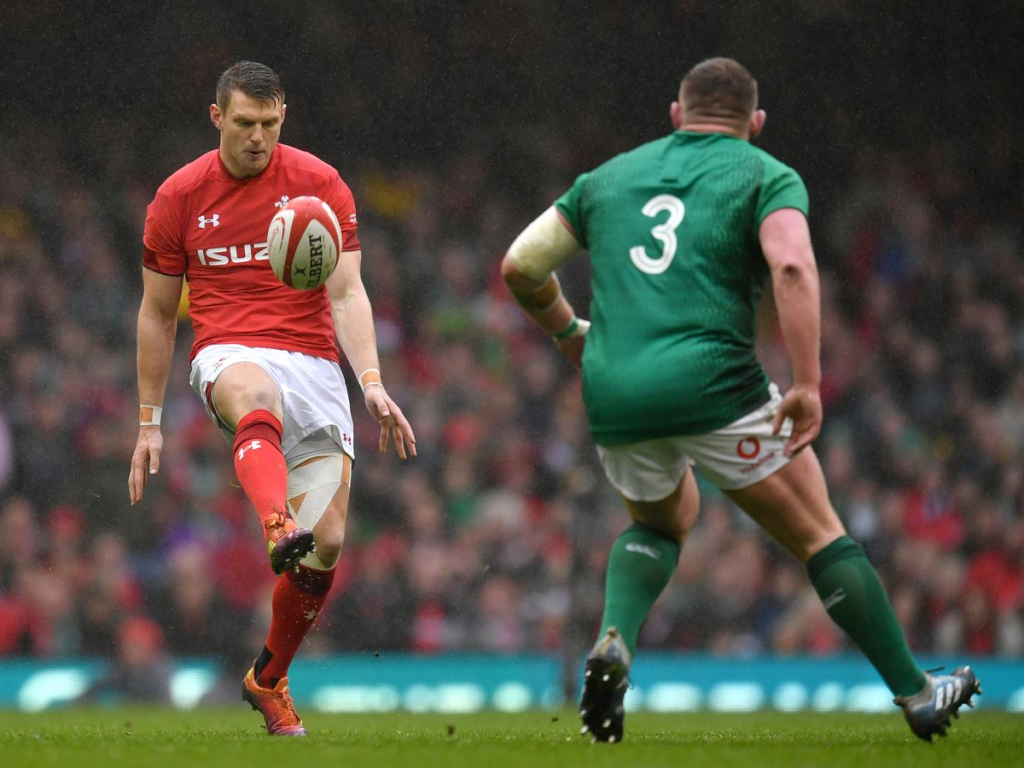In rugby, victory or defeat boils down to how well a team can execute its own master plan and stifle that of its opponents. To do this, the sport has afforded them a number of tools to ensure the continuous flow of play and ample opportunities and provisions within its rules to guarantee the safety of either team taking part in a fixture. Among these tools are a number of kicks that can be deployed with great success on both offense and defense, especially in instances handling the ball may be ill-advised or unsafe.
What are the three types of kicks in rugby? The three types of kicks in rugby are the drop kick, the place kick, and the punt. A drop kick refers to where the ball first touches the ground before being kicked, a place kick requires one to first place the ball on the ground whereas a punt refers to an instance where a player kicks the ball before it touches the ground.

A Brief History of Kicking in Rugby
One may argue that kicking is a part of rugby’s identity as much as handling the ball is. The two elements are what distinguish rugby from other sports in the world including its first cousin, soccer, with whom rugby shares a considerable part of its past.
The sport that is known and loved today is believed to have existed in one variation or another as far back as medieval times. The modern iteration is however believed to have been conceptualized around 1845 when one William Webb Ellis, a student of Rugby School (located in Rugby, Warwickshire), picked up a ball and began running with it.
Though this historical account is disputed, no other alternatives have been offered and it thus remains the sport’s unofficial origin story. The sport grew in popularity in English public schools and became their go-to pastime. Those that graduated from such schools carried on the tradition into universities and tertiary institutions of education, further contributing to its increasing popularity.
Rugby ultimately got its “independence” from Association Football after the Football Association was formed and its first set of laws was drafted in 1863. Subsequent amendments to the FA’s rules forbade elements like handling of the ball, blocking, and tackling prompting a number of clubs to secede from the FA. These clubs formed the first rugby clubs in 1864 and sparked the founding of others across England, which ultimately led to the formation of the Rugby Football Union in1871.
The purpose of sharing this brief history, in this case, is to highlight the fact that handling and kicking are the two “pillars” of the sport. This can be seen in other elements of the sport like scrums where players are required to control the ball first using their feet before picking it up with their hands and proceeding with play.
Why Three Types of Kicks?
Kicks serve specific purposes in rugby. Put differently, there are mainly three types of kicks since they are the required number needed to serve a purpose within the game. Allowing kicking at will would have served the sport negatively and robbed it of its meaning and purpose.
For context, let’s examine the three types of kicks at length. As previously mentioned, they are the drop kick, the place kick, and the punt. Drop kicks are largely used to gain points. A successful kick through the goal is usually awarded three points. These add on to a team’s total tally alongside tries and conversion, which are awarded five and two points respectively.
Drop kicks offer a good alternative in instances where attempting to advance may result in loss of possession and also instances where a team may not have ample time to do so. A drop kick is also a good counter to a punt from the other team if intercepted and converted before the opposing team closes the distance to the ball.
Drop kicks are also used to start play at the beginning of each half. They are also used to restart play after either team scores points or after a defending team grounds the ball in their own in-goal to thwart a try attempt by their opponents.
A punt is often used to clear the ball as a last-resort defensive measure or as a gutsy attempt to gain territory. Punts are often high-risk maneuvers as they almost always result in the loss of possession. A team would have to punt the ball just right to chip it over their opposition and have players who possess the necessary speed to regain possession and perhaps make a try before it crosses their opponent’s touchline.
A punt has to be done just right since kicking the ball through an opponent’s in-goal results in winning a scrum from the position the kick was attempted. All in all, there’s very little, if any, room for error and the risk often outweighs the reward.
Place kicks are arguably the most technical of the three. They are used to convert a try (which earns a team two extra points aside from the five they earn from making a try) and to convert penalties awarded for infractions made by an opposing team.
They are called place kicks since the ball first needs to be placed on a kicking tee on the ground before an attempt is made. Most teams often have a designated player who attempts such kicks as they may need to cover great distances.
A number of notable rugby players have made their careers out of taking and converting such kicks. A few household names in this regard include former All Blacks ace Dan Carter and ex-England fly-half Jonny Wilkinson, who scored a large portion of his career points from kicks.
Other Kick Variations Used in Rugby
There are a number of variations of the three traditional kicks which players often utilize in matches. Good examples are the fly-hack, which provides attacking players with the option of kicking the ball in their opponent’s direction instead of dropping on it or attempting to pick it up to gain possession.
Another two popular variations are the grubber and the “Gary Owen” (up and under) which are utilized to achieve the same objective (gaining territory) but in different ways. To execute grubber kicks, a player purposefully kicks the ball along the floor. The ball’s shape and pitch’s terrain conspire to distort the ball’s trajectory making it much more difficult for opposing players to pick it up or intercept it.
Gary Owen uses an equal and opposite strategy of kicking the ball over as high as possible to get it further down the pitch and then rushing underneath it to catch it when it lands. The moniker Garry Owen is a nod to a club by the same name that routinely used the move in the early 1900s to devastating effect.
